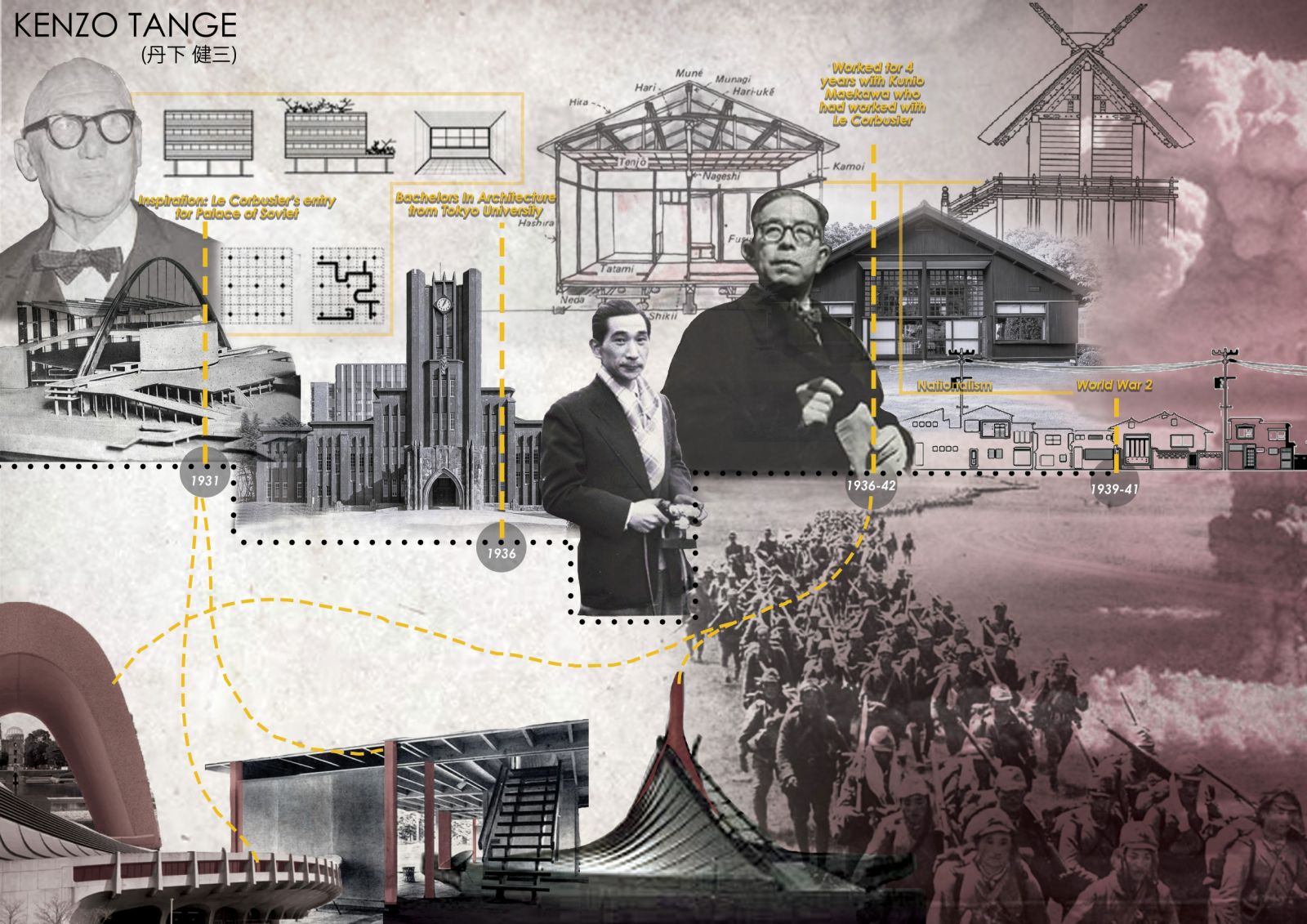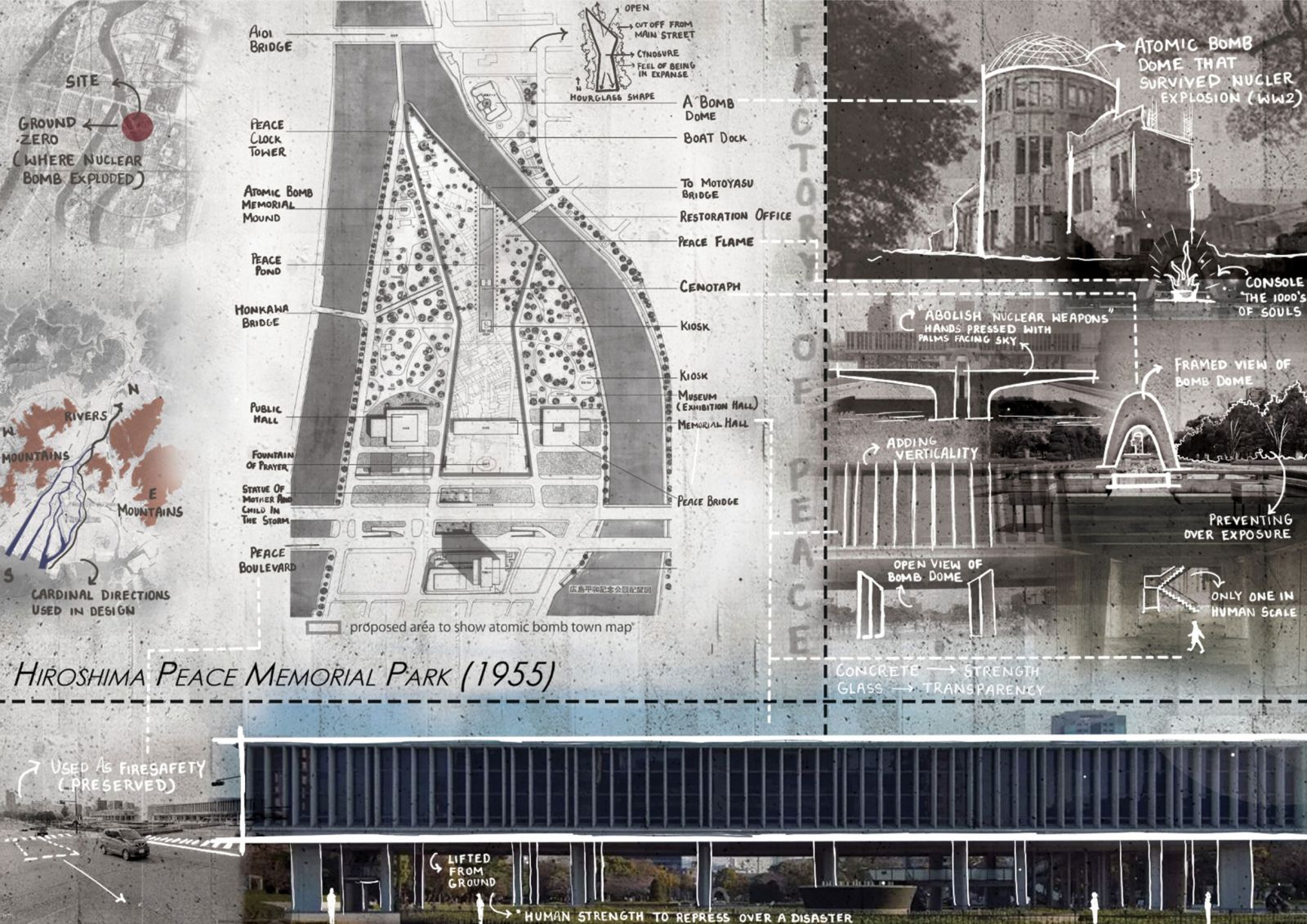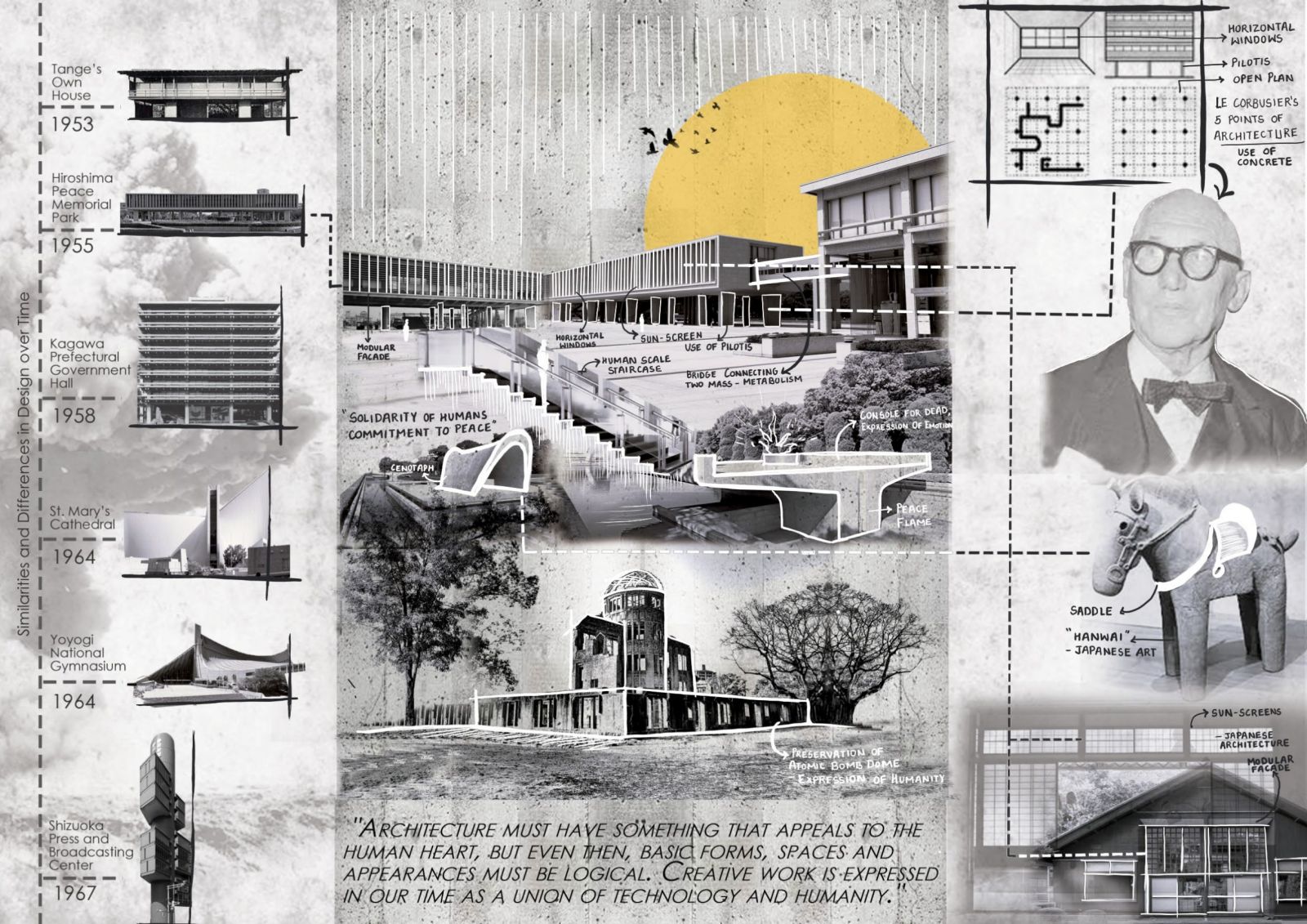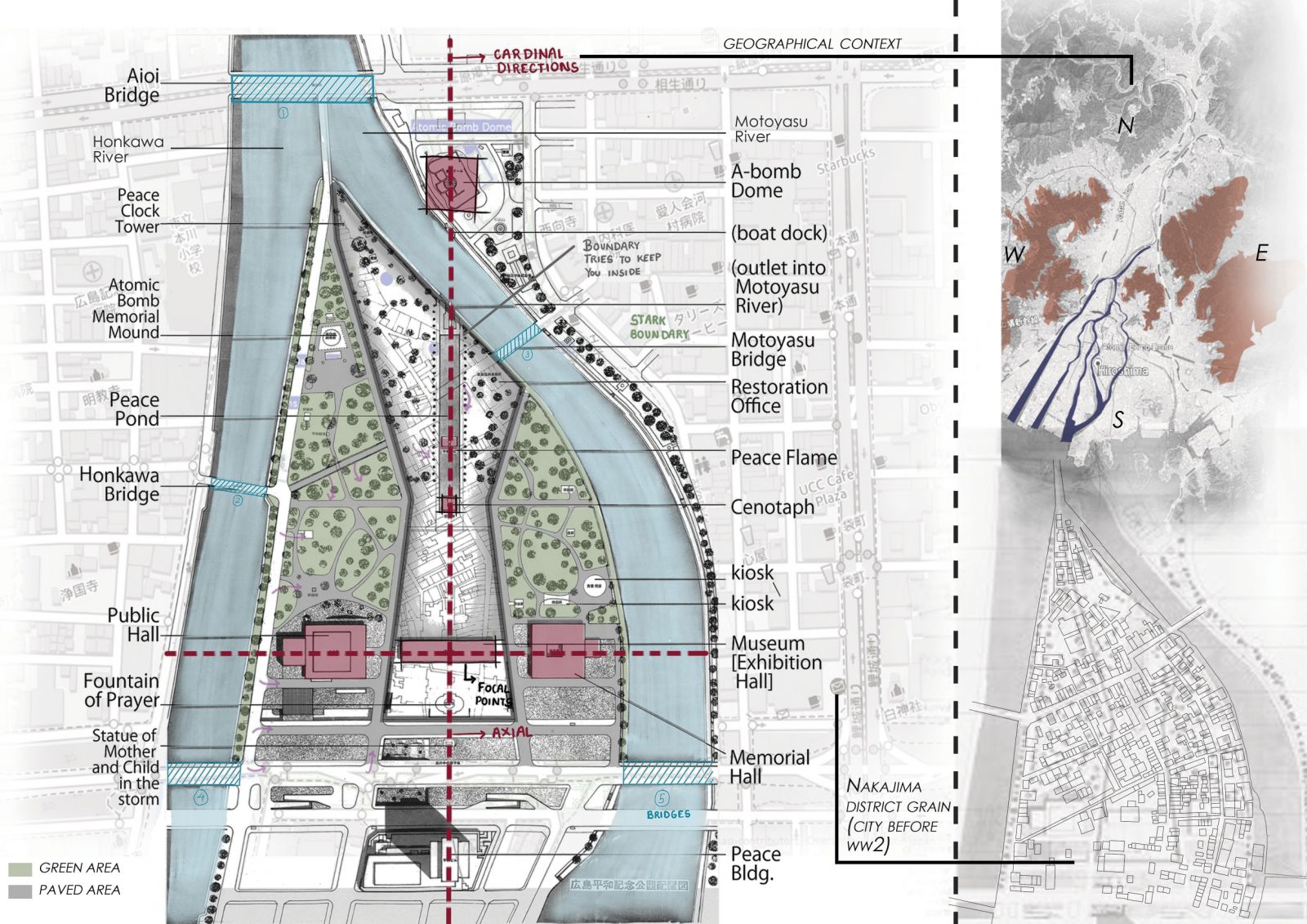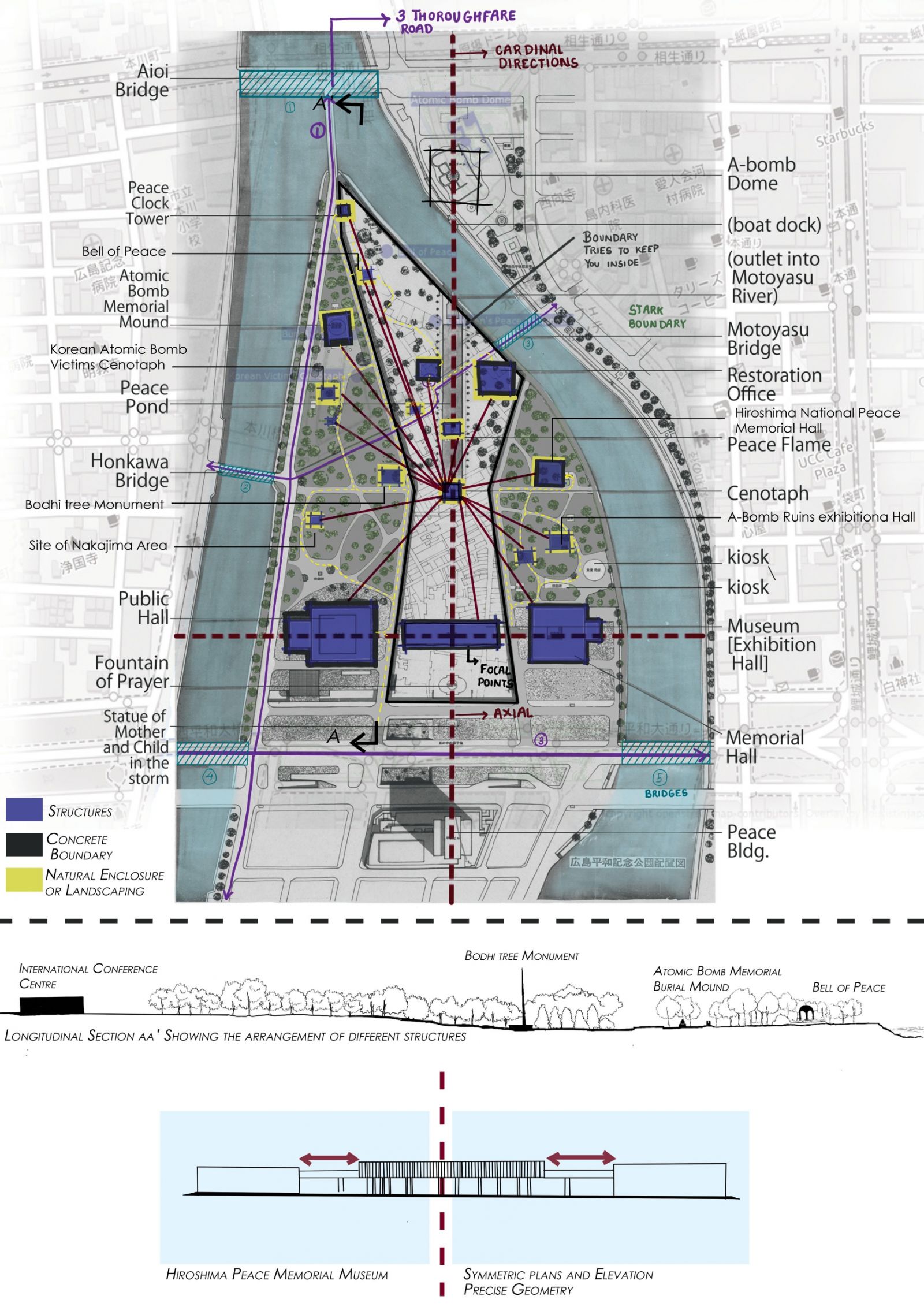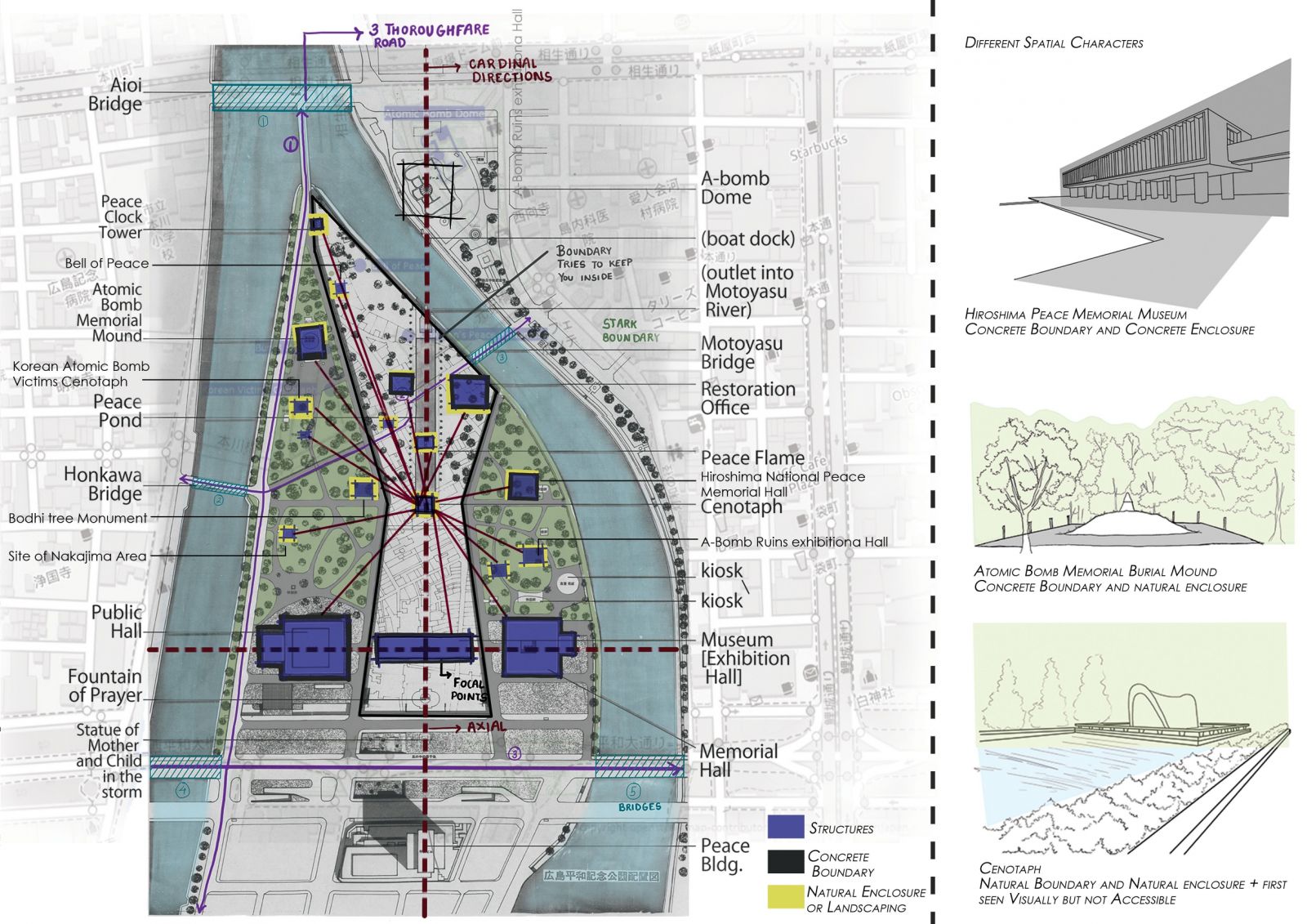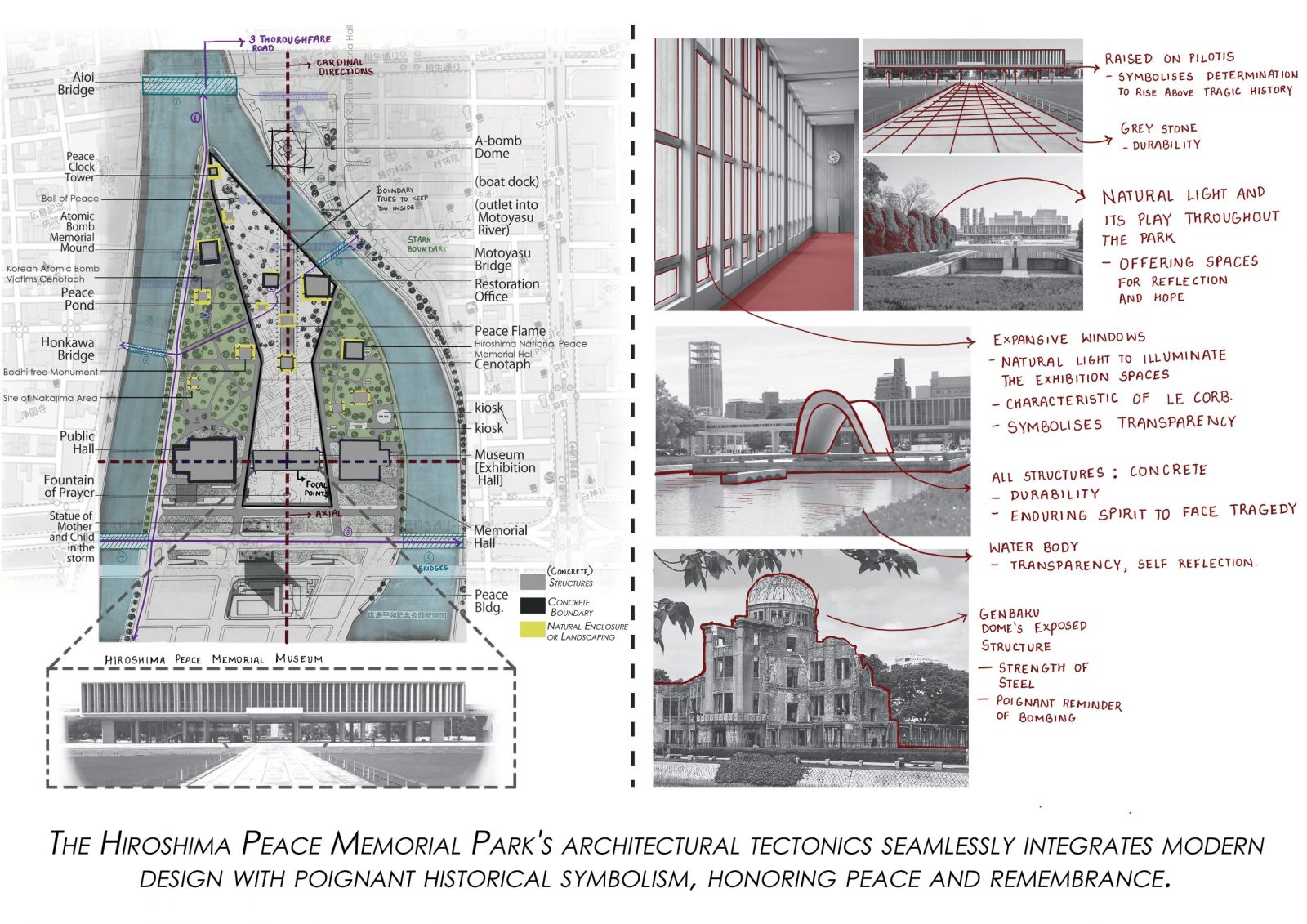Your browser is out-of-date!
For a richer surfing experience on our website, please update your browser. Update my browser now!
For a richer surfing experience on our website, please update your browser. Update my browser now!
Kenzo Tange was born in Osaka in 1913, studied at the University of Tokyo and was influenced by Le Corbusier and Walter Gropius. After graduating in 1938, he worked with Kunio Maekawa, blending modernist concepts with Japanese architecture. Post-WWII, Tange gained prominence, establishing his studio in 1946. His Hiroshima Peace Memorial Park design, inspired by the atomic bombing's tragic history, combines traditional aesthetics with modernist ideals to promote peace and remembrance. The park's integration of natural and built elements creates a contemplative space symbolizing resilience and hope, cementing Tange's legacy. Illustrations decode his life milestones, linking them to this project.
